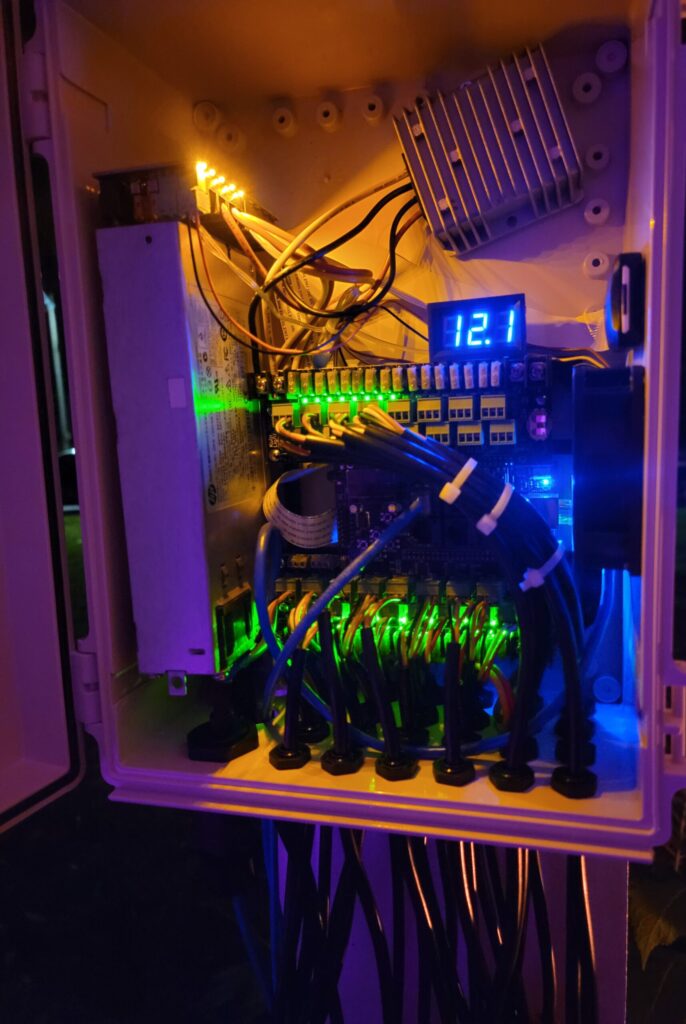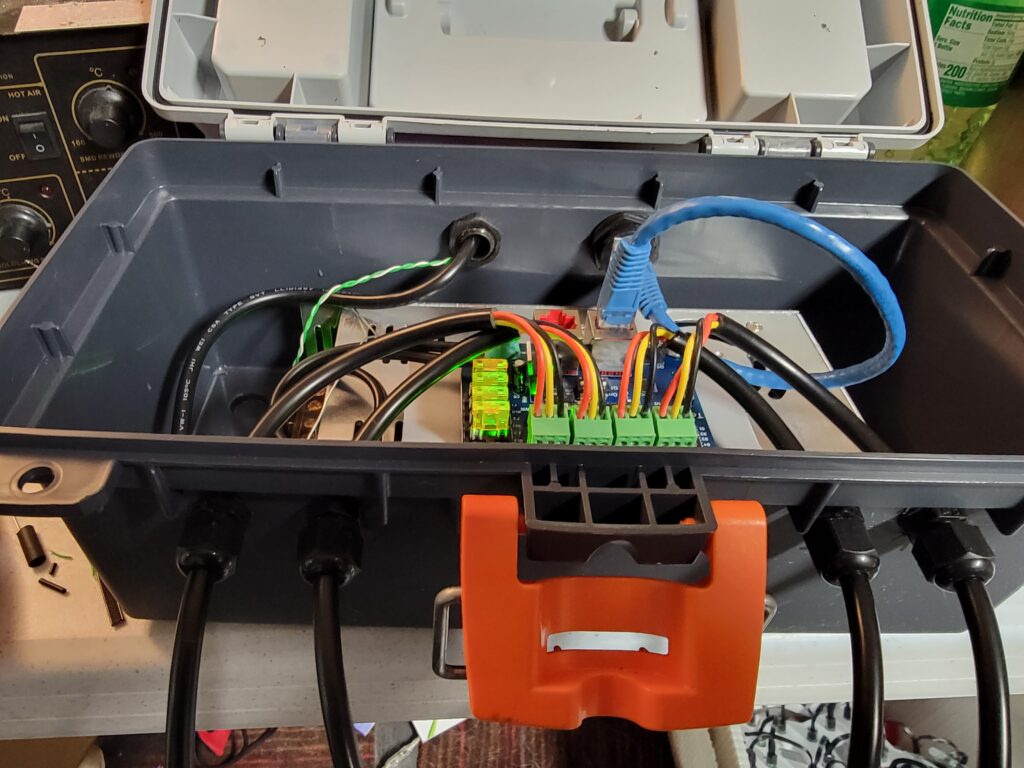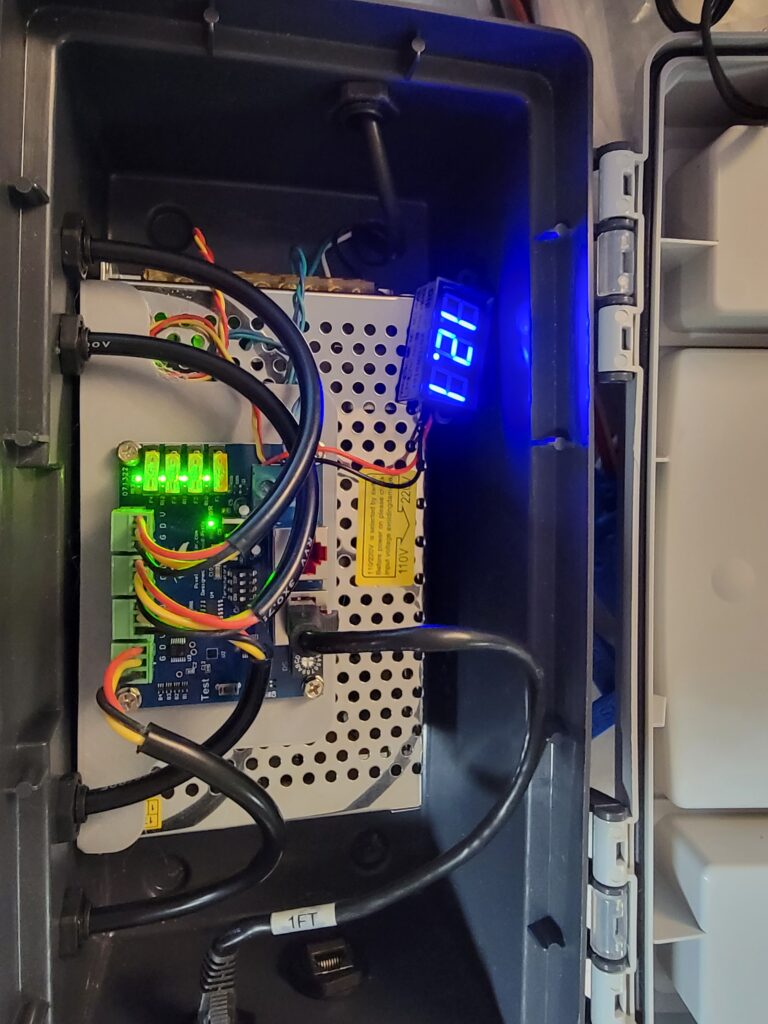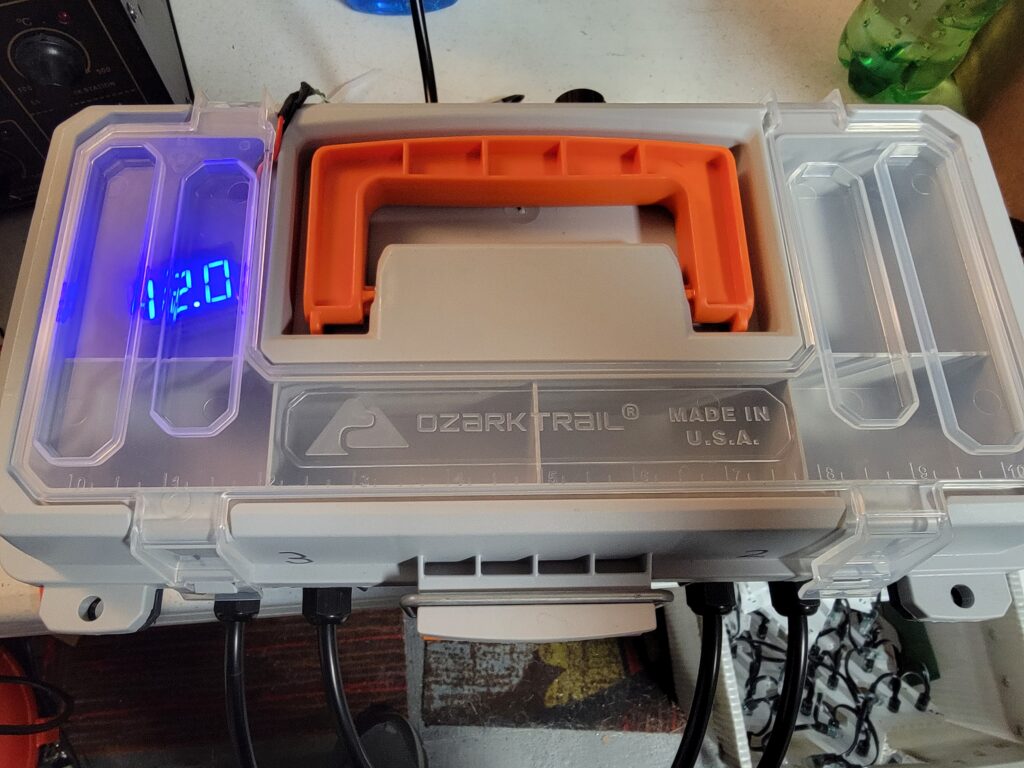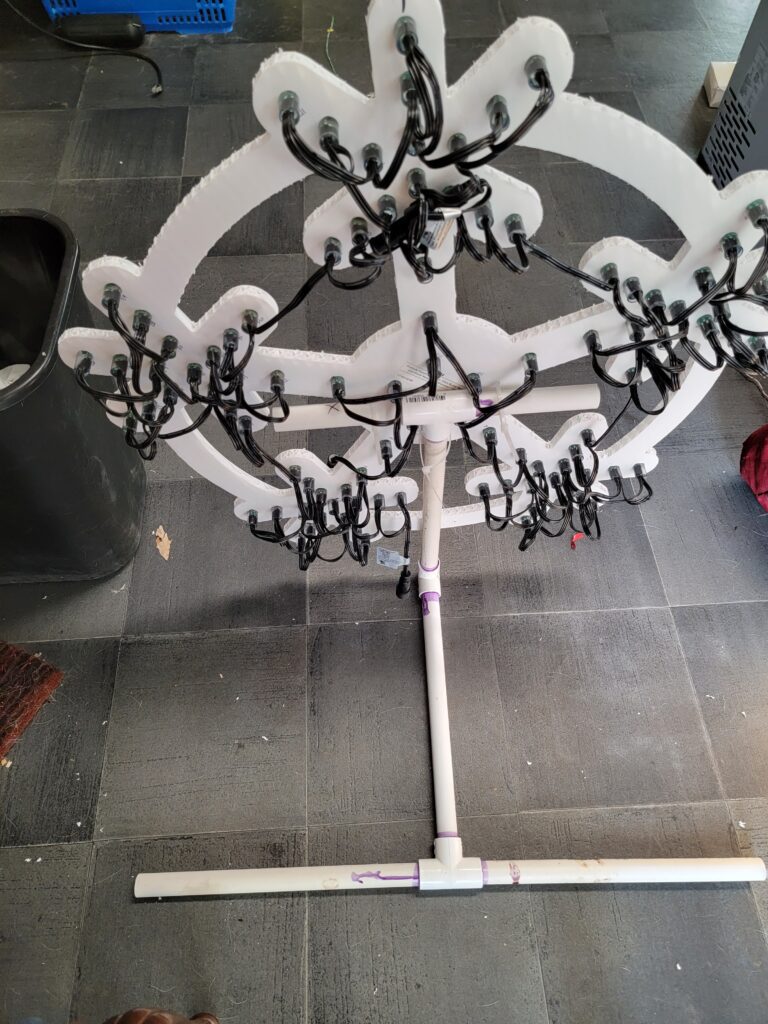New in 2023:
Two 120″ High-Res screens (projectors)
Two 46″ Singing “light bulb” Faces
Four 30″ Singing “light bulb” faces, 2 on the roof, 2 in the yard
One 4-Foot tall singing tree in the yard
One 16-foot by 2 foot high matrix above the garage
One 10-foot tall Pixel tree
Four 3-foot high colored candy canes
Two high-res projectors
Replaced strip-lights along roofline with Nodes
Added in 2022:
Six 24″ Snowflake Props
Eight 12″ Star Props
Two 24″ Wreath Props
Two 4′ Trees
Eight 6.5′ Arches
4’x8′ Pixel Matrix
2’x4′ Tune-To sign
Kulp 32A-B 32-port Controller
Standardized on Xconnect cabling
Updated old sequences and added new ones
Added Halloween Lights
History:
In 2016, we started our motion lighting adventure with a simple display. I conveyed to my wife that I had always wanted Christmas lights like I had seen on TV and in videos online. She supported me and helped me along the way. It all started with some PVC pipe and 5v strands of pixels custom fitted for our previous home in west county. I purchased the Falcon F16v2 Controller and started connecting things up. I watched lots of videos (of what was available at the time) on how to wire up and sequence lights. Simple sequences were all I could muster in the beginning and it took 8-10 hours per song. If you look at the links on our Videos Page as well as my YouTube channel, you’ll see the earlier work, very different than the sequences created today.
Technical Details:
Today, our light show is powered by a Kulp 32A-B Controller. This controller supports 32 directly connected ports and another 16 ports connected through differential receivers over Cat-5 network wires. This is a very powerful controller supporting a total of 76,800 pixels over the 48-ports. This year, we’ll have approximately 9800 pixels in our display. We use a combination of 5v Pixel-Strips that are zip-tied to PVC pipe (outlines of the house) and 12v Bullet-Node pixels on all of the props and roof-line.
Our light show runs with 5 “differential receivers” and multiple power-injection power supplies. The core of our display is powered with an HP 1200watt Computer Server power supply that powers most of the pixels. We use power-injection in some places where needed, mostly on the 5v pixels.
Here’s some pictures of things behind the scenes that make our show possible.
